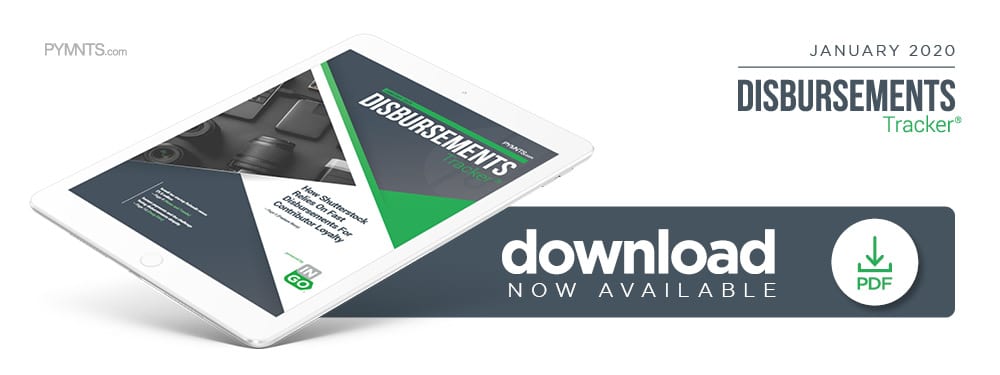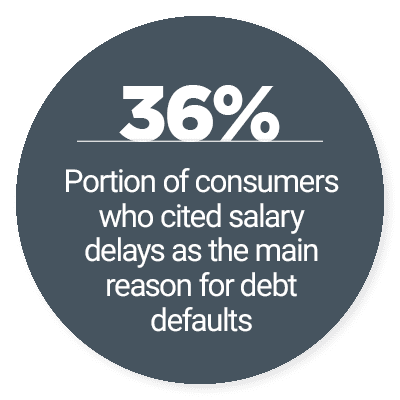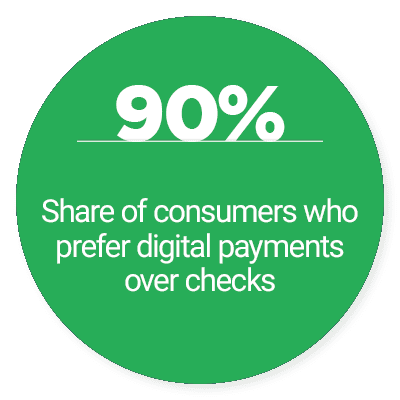How Shutterstock Fast-Tracks Royalty Disbursements For Its 1 Million Contributors

 More than 90 percent of U.S. consumers now prefer to receive digital payments over paper checks. Cash and checks persist as the disbursement methods for many companies, however, despite the growing preference for online payments.
More than 90 percent of U.S. consumers now prefer to receive digital payments over paper checks. Cash and checks persist as the disbursement methods for many companies, however, despite the growing preference for online payments.
 These outdated methods cause frictions, both in delaying the payout process and in the relationship that consumers and businesses have with each other. Consumers waiting for cash or check disbursements can suffer financial setbacks, which can frustrate their view of the businesses that have caused the financial backlog. In the most recent Disbursements Tracker, PYMNTS discusses how moving to digital disbursements can alleviate these pain points, but businesses also have compliance and infrastructure costs to consider as they innovate their payment processes.
These outdated methods cause frictions, both in delaying the payout process and in the relationship that consumers and businesses have with each other. Consumers waiting for cash or check disbursements can suffer financial setbacks, which can frustrate their view of the businesses that have caused the financial backlog. In the most recent Disbursements Tracker, PYMNTS discusses how moving to digital disbursements can alleviate these pain points, but businesses also have compliance and infrastructure costs to consider as they innovate their payment processes.
Around The Disbursements World
The economy is growing more interconnected, so enabling disbursements between different nations and local currencies is becoming more critical. Israeli financial startup Refundit recently raised $9.8 million to enable mobile travel disbursements for international travelers, which will allow them to more easily collect value-added tax (VAT) refunds from their international purchases.
 Creating support for online disbursements can also be a significant way for many countries, governments and banks to save money, according to some studies. For example, moving disbursements online could save Filipino government agencies approximately $100 million annually, as it will allow payees to have faster access to their funds. It would also limit the reliance that Filipino banks and institutes have on cash, which is becoming a more expensive payment method for both consumers and businesses worldwide.
Creating support for online disbursements can also be a significant way for many countries, governments and banks to save money, according to some studies. For example, moving disbursements online could save Filipino government agencies approximately $100 million annually, as it will allow payees to have faster access to their funds. It would also limit the reliance that Filipino banks and institutes have on cash, which is becoming a more expensive payment method for both consumers and businesses worldwide.
U.S. banks like JPMorgan Chase are making further innovations in the disbursements space, with its recent partnership with payments processing firm Workiz to give its Chase cardholders access to faster payments. The partnership will give Workiz field workers with Chase bank accounts — and, thus, cards — the ability to accept real-time disbursements for their work. This can enhance both the efficiency of the workers and their satisfaction with their employers.
To learn more about this and other news items in the space, visit the Tracker’s News & Trends section.
How Shutterstock Is Using Digital Disbursements For Contributor Loyalty
 One of the roles that has become more critical to global business is that of content creation, with photographers, videographers, graphic designers and other such gig workers crucial to the success of companies in multiple industries. Making sure that these creators — whether freelance or full-time — are paid with the speed and transparency they are coming to expect is essential to keeping them satisfied with the platforms for which they work.
One of the roles that has become more critical to global business is that of content creation, with photographers, videographers, graphic designers and other such gig workers crucial to the success of companies in multiple industries. Making sure that these creators — whether freelance or full-time — are paid with the speed and transparency they are coming to expect is essential to keeping them satisfied with the platforms for which they work.
That is why content creation company Shutterstock is using digital disbursements to enable contributor loyalty, said Paul Brennan, vice president of content for the company. To learn more about how Shutterstock is innovating disbursements to inspire further satisfaction for its more than 1 million contributors, read the feature story.
The Instant Payment Ubiquity Challenge
Digital disbursements and payment solutions have certainly grown over the past decade, with more industries relying on online tools to send money as quickly as possible. However, instant disbursement solutions have yet to reach ubiquity across all the industries in which they are needed, and checks continue to cling onto life for disbursements.
The continued existence of these legacy payment tools could be holding back the spread of more innovative disbursements tools that can further add speed and transparency to modern business. To learn more about some of the challenges instant payments are facing, visit the Tracker’s Deep Dive.
About The Tracker
The PYMNTS Disbursements Tracker, powered by Ingo Money, is the go-to monthly resource for staying up to date on the trends and changes in the digital disbursements space.